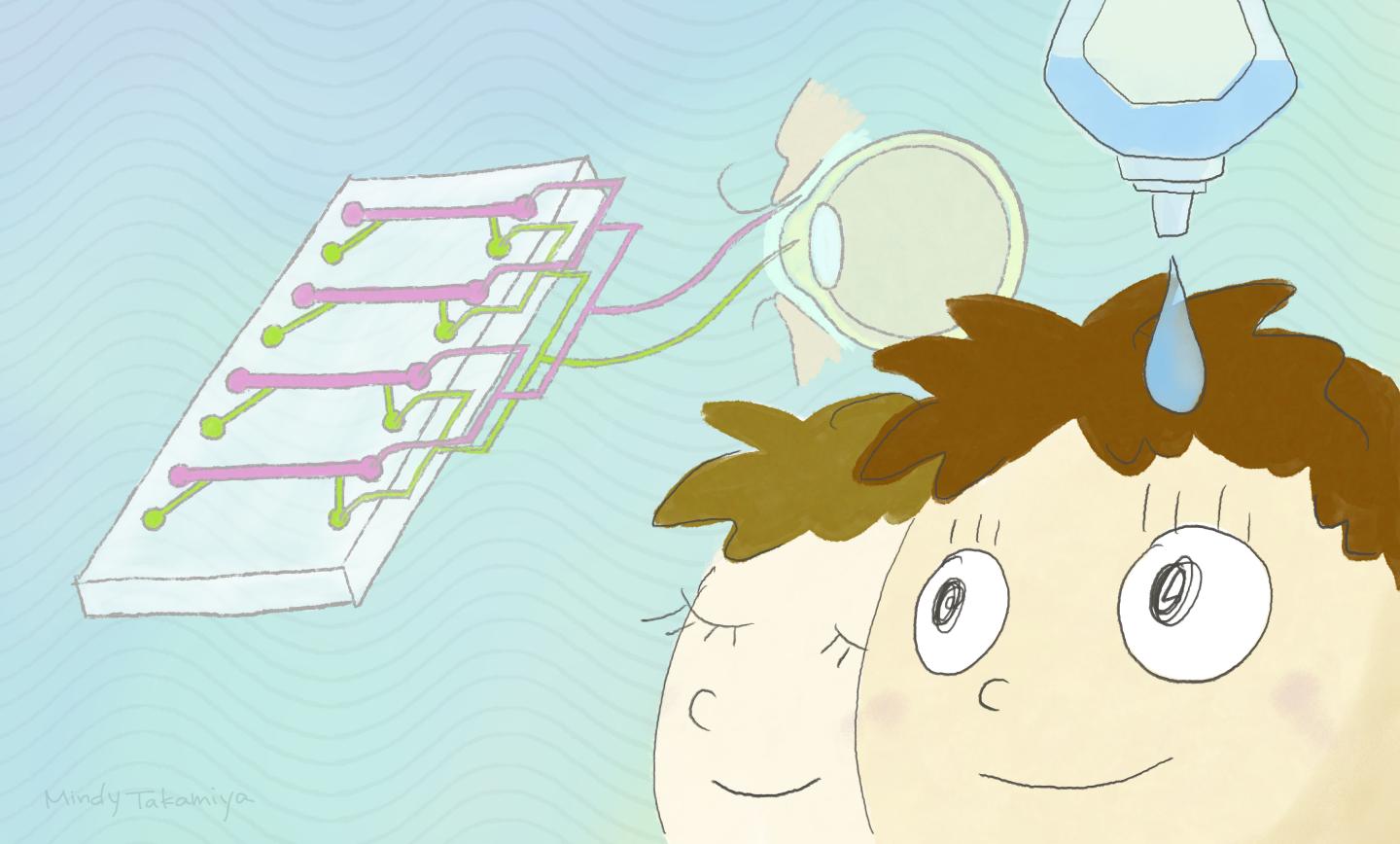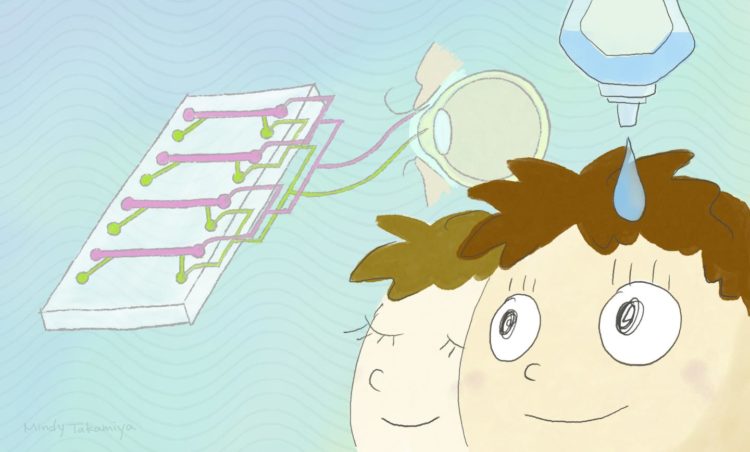A new approach could lead to ‘cornea-on-a-chip’ devices that more accurately test the effects of drugs on the human eye

Credit: Mindy Takamiya/Kyoto University iCeMS
Researchers at Kyoto University’s Institute for Integrated Cell-Material Sciences (iCeMS) have developed a device that moves fluids over corneal cells similarly to the movement of tears over a blinking eye. The scientists hope their findings, reported in the journal Lab on a Chip, will help improve ophthalmic drug development and testing, and advance understanding of how blinking affects the corneal surface.
The cornea is the transparent disc that covers the central surface of the eye. It acts as a protective barrier against dust, germs, and other potentially damaging objects.
One way scientists test ophthalmic drugs is to administer them into rabbit’s eyes. But rabbits blink significantly less than humans, so drugs have more of a chance to permeate the rabbit’s cornea and enter into the eye. Alternatively, scientists use tiny wells containing human corneal cells. But here also, the cells aren’t exposed to the normal environment of a living human eye.
Kyoto University pharmaceutical scientist Rodi Abdalkader and micro-engineer Ken-ichiro Kamei collaborated to develop a device that overcomes these issues. They 3D-printed a device that contains four upper and four lower channels, separated by a clear polyester porous membrane. Corneal cells are incubated in each upper channel on top of the membrane. After seven days, they form a barrier of cells that separates the upper and lower channels. Fluid is then moved through the device to emulate the pressure exerted on one side of the cornea by a blinking eyelid and moving tears, and on the other side by the fluid of the inner eye.
Interestingly, they found that this movement changed the shape of the cells and increased the production of filaments, which are known for keeping corneal cells flexible and elastic.
“It was really interesting to find that an eye-blinking-like stimulus has a direct biological impact on these cells,” says Abdalkader. “We blink frequently and unconsciously all the time. With each blink, a shear stress is applied on the corneal barrier that causes the cornea counter-defence system to secrete fibrous filaments, like keratins, to overcome the effects of the stress.”
Not only does the device emulate human blinking while using human cells, but it also allows testing four different samples under similar conditions at the same time.
“We believe this platform will pave the way for improved ocular drug development, and further investigations into the effects of the shear stress caused by eye blinking on the eye’s surface,” says Abdalkader.
###
DOI: 10.1039/C9LC01256G
About Kyoto University’s Institute for Integrated Cell-Material Sciences (iCeMS):
At iCeMS, our mission is to explore the secrets of life by creating compounds to control cells, and further down the road to create life-inspired materials.
https:/
For more information, contact:
I. Mindy Takamiya/Mari Toyama
[email protected]
Media Contact
I. Mindy Takamiya
[email protected]
81-906-838-1188
Related Journal Article
http://dx.





